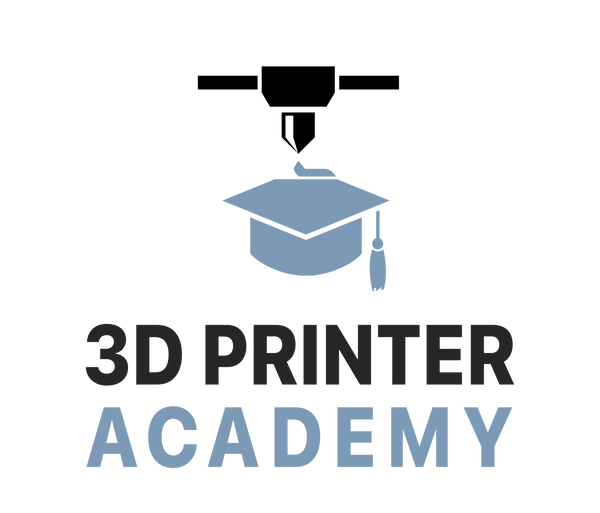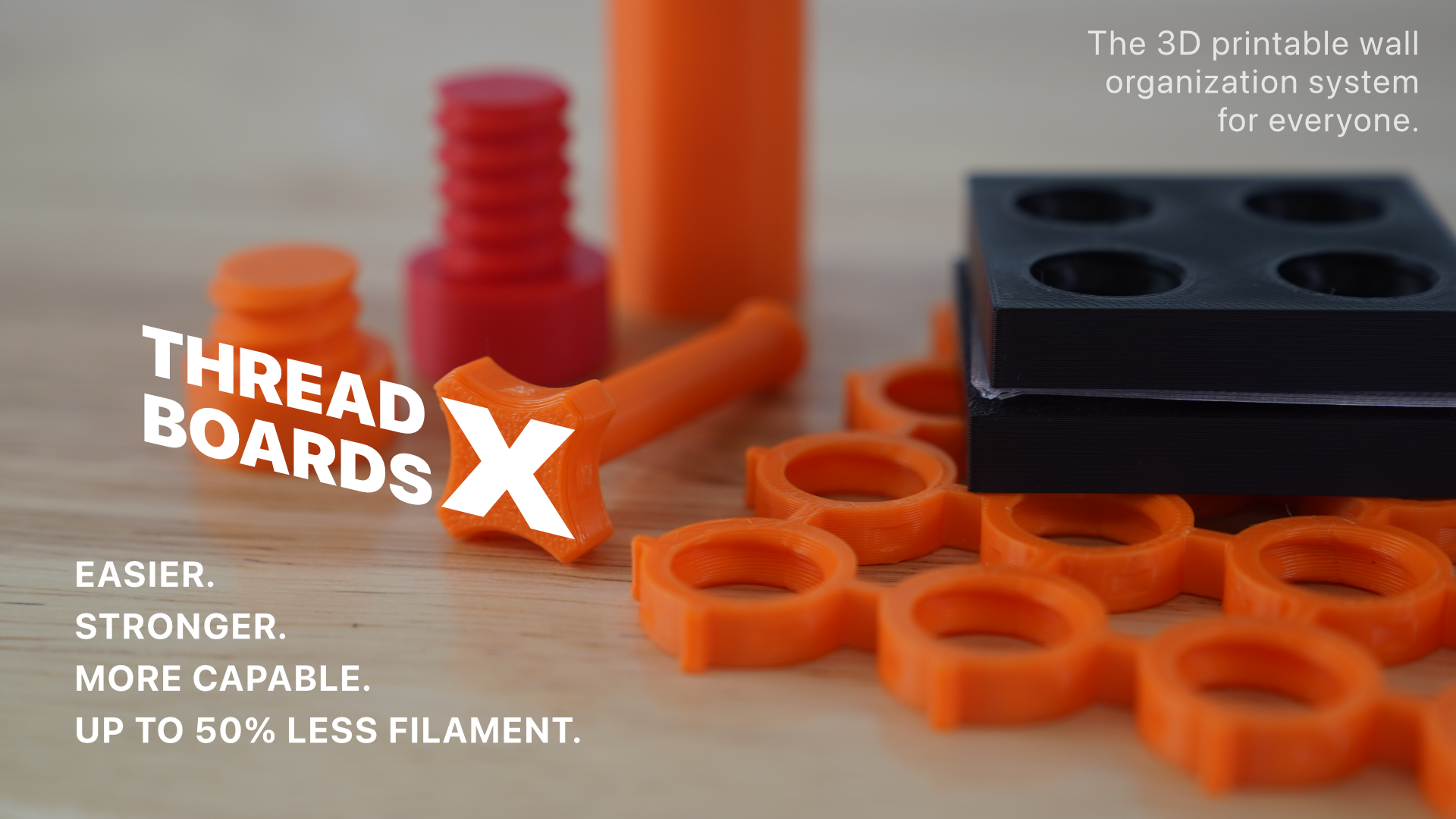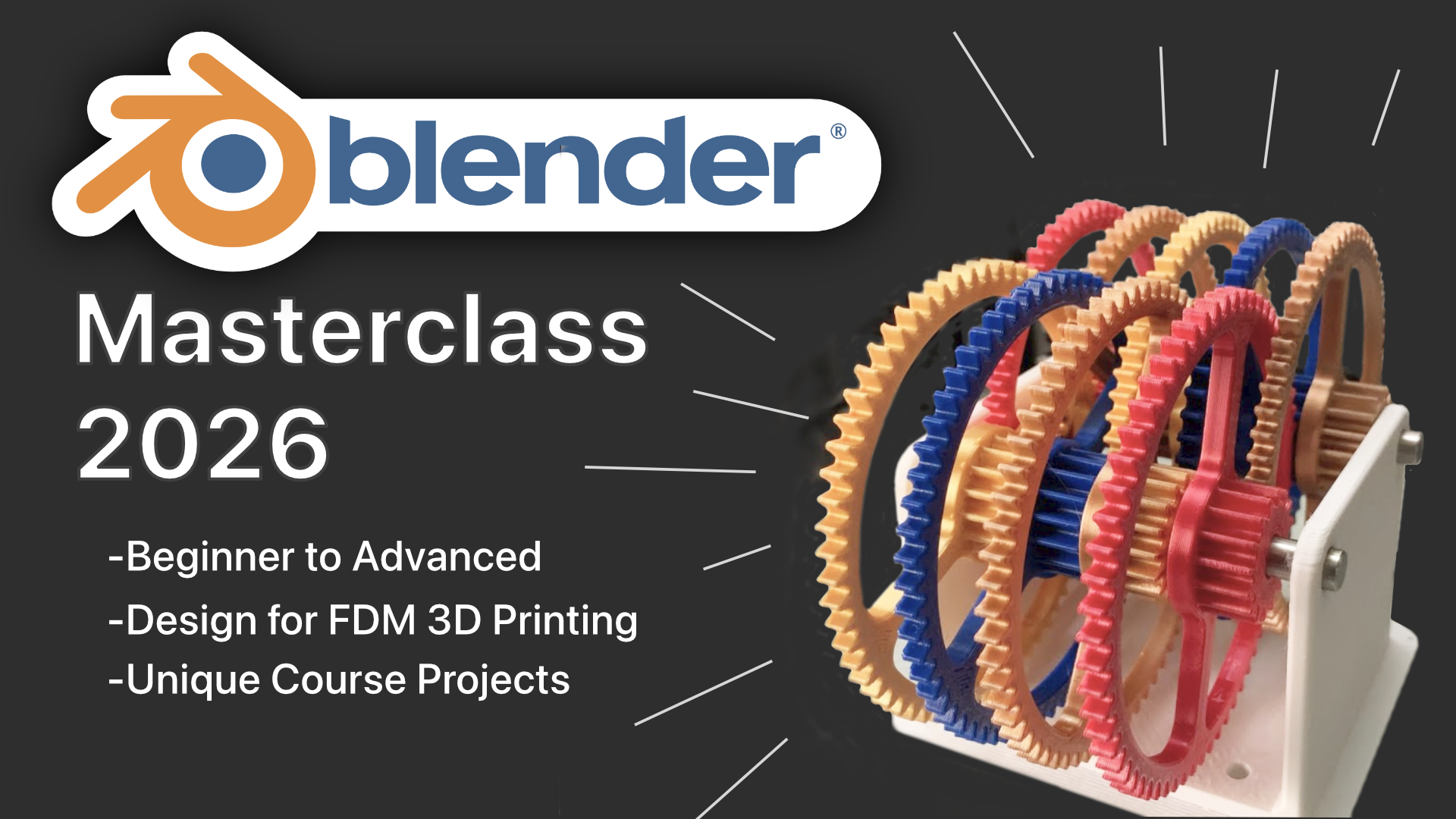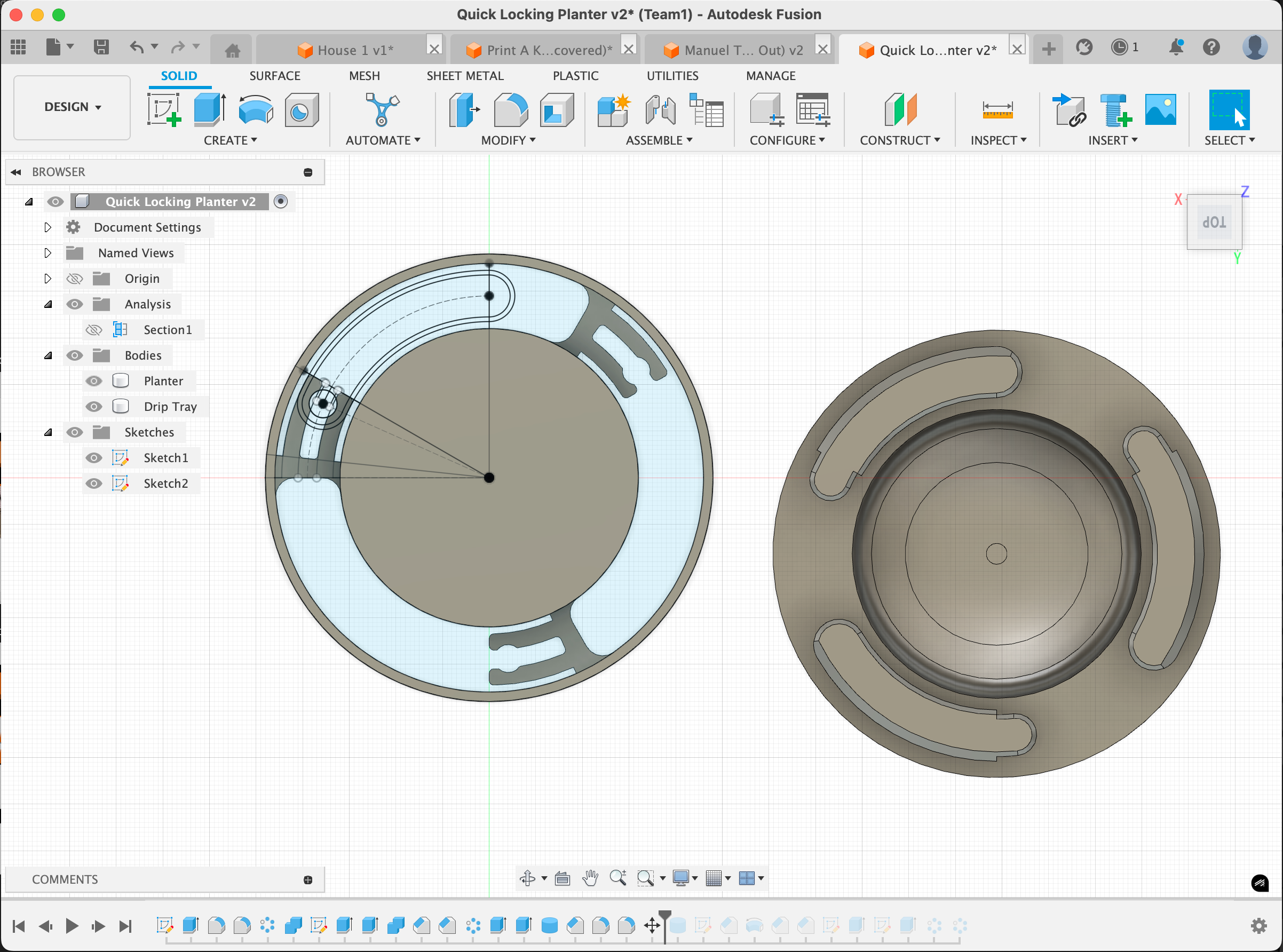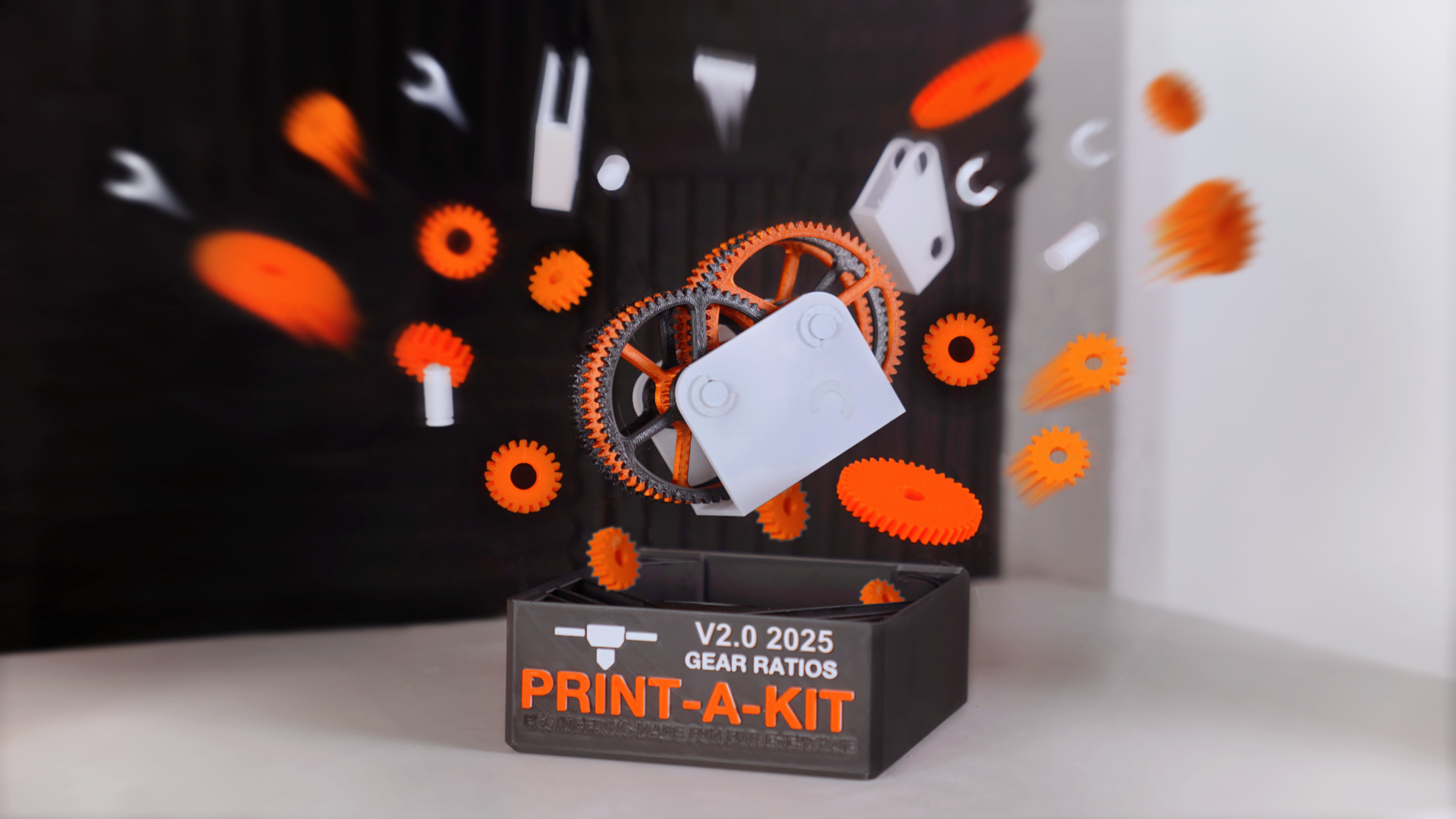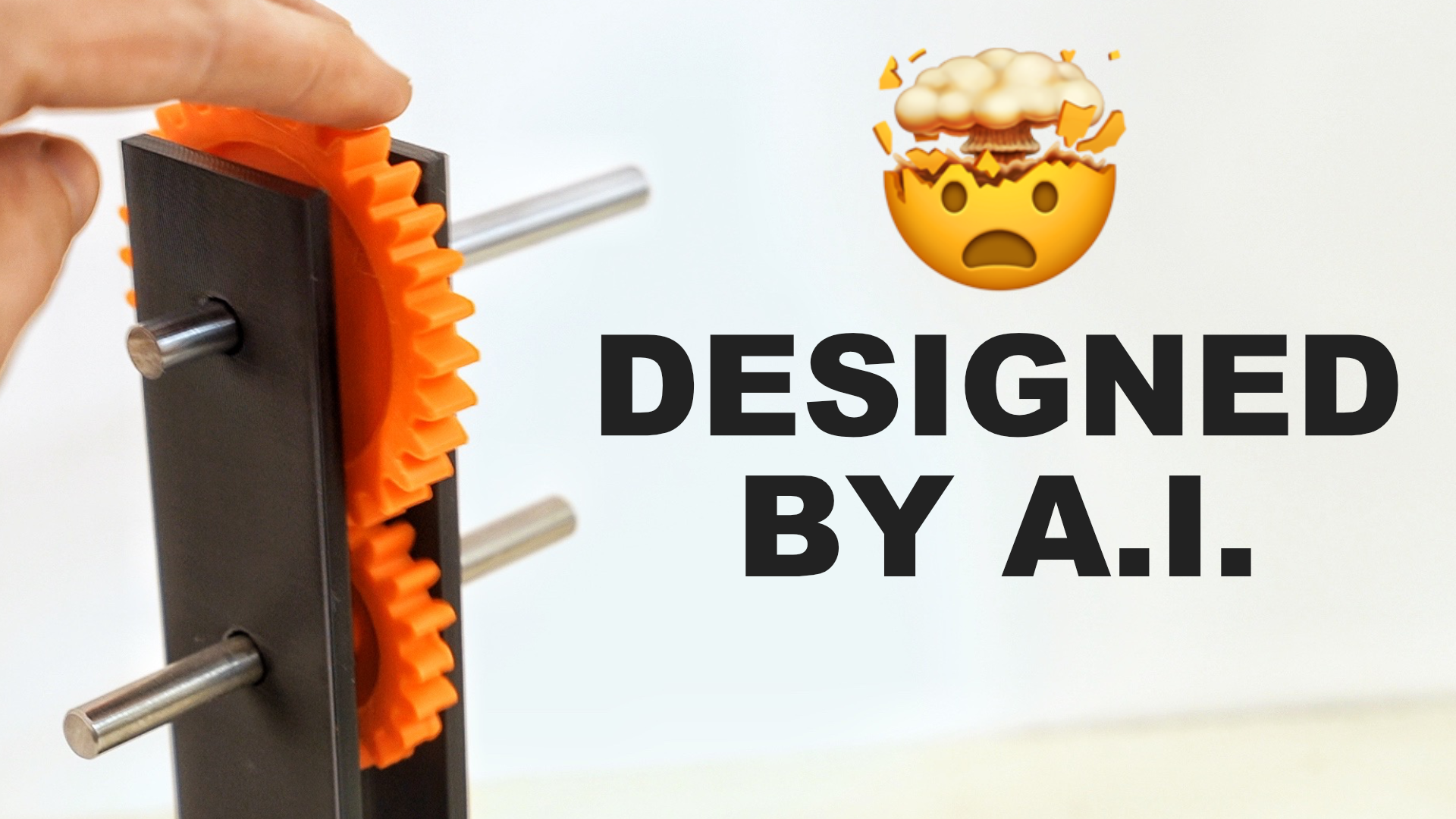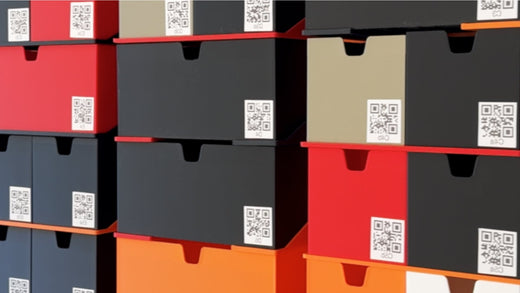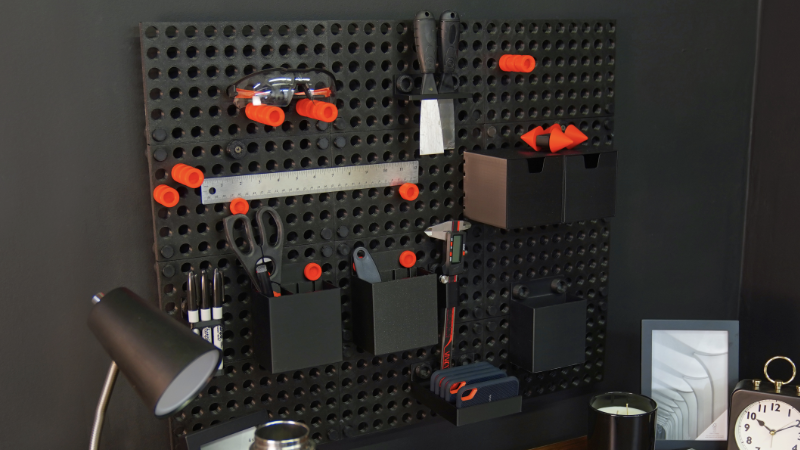The CEO of Bambu Lab, Dr. Ye Tao, also known as Dr. Turbo, was recently interviewed by Stefan from the YouTube channel CNC Kitchen. The interview provides a wealth of valuable information and insights into the ethos of Bambu Lab. Stefan even goes so far as to ask, "Is Bambu Lab evil?"
Below is a paraphrased transcript of the interview, edited for clarity, readability, and flow:
Introduction/Bambu Lab A1 Mini
Dr. Turbo (Ye Tao): Hello, I'm Ye Tao. People call me Dr. Turbo. I'm the CEO and founder of Bambu Lab, a company focusing on consumer desktop 3D printers.
Stefan: So, I think we can directly start with something that I can already see in your backdrop, and this is your new printer, the A1 Mini. It's a small entry-level 3D printer. I'm quite sure that people might be a bit confused and asking themselves why you ventured into the small entry-level printer market and not produced an X1 XL, which many people wanted.
Dr. Turbo (Ye Tao): I think it's time to, you know, owe everybody an explanation. Our customers have been asking for a bigger printer for quite a long time, and we hear their voice. I feel a bit sorry that we haven't provided the large printer they've been waiting for in this release. I believe an explanation is warranted. It was a tough decision. After completing the X1 and P1, with essentially the same chassis and system, we had to choose which direction to take next. The demand for a larger printer was very clear. It would have been straightforward to scale up the X1 to create the X1 XL. But there are constraints; we're short-staffed, and our development process is intricate, like building complex software. We've worked on various components like the chassis, the motion system, the control board, and implemented new technologies. Every new printer is a significant undertaking, requiring significant resources, especially from our R&D team. We could have simply scaled the X1 or moved forward with a more advanced version once our R&D had something more innovative ready. There was debate on releasing a larger printer quickly or saving resources for a better model in the future. Ultimately, we decided to work towards a more advanced X1 XL. Whether this was the right choice will only be known once we release a new printer. So, in essence, we will have a larger printer, and I hope people won't regret waiting for it.
Stefan: So there you have it - the reason why they made the smaller A1 and not just a scaled-up version of the popular X1. The A1 is indeed small, with a print volume of 180 by 180 by 180 millimeters. Due to its cantilevered design, the price has also been reduced to a competitive $299 for the printer itself, and $465 if purchased with the new AMS light. The A1 doesn't simply use parts from the X1 on a cheaper motion system; most of it is entirely new and more advanced than the X1. To be completely honest, I'm not a fan of enormous printers due to the challenges they pose - higher mass, more space, increased power consumption. I believe the X1 is ideally sized for many projects. If something's too large, you can always segment it and assemble it differently. I find it fascinating that you've ventured into the more entry-level market. I hope this move makes 3D printing even more accessible for newcomers.
Dr. Turbo (Ye Tao): Yeah, I think that's the essence of the A1. From what I observe, a significant challenge in the 3D printing community is that many newcomers give up on 3D printing within a month or two. The reasons often are they can't fix a clogged nozzle, the print quality doesn't meet their expectations, or they struggle to fine-tune the printer. This attrition is a loss for the community. We have the technology and capacity to produce a smaller, more user-friendly printer quickly, aiming to ensure that more people truly embrace 3D printing instead of abandoning it prematurely. That's the foundational idea behind the A1.
Stefan: I must say I really appreciate the Quick Change Nozzle feature on the A1. It's such a user-friendly approach.
Dr. Turbo (Ye Tao): Right. Even with our top-tier models like the X1, changing the nozzle can be a daunting task.
Stefan: Absolutely, even though it might be somewhat better on some machines, the process of unplugging wires and other related tasks is quite cumbersome. The system on the A1, especially the quick change nozzle which can be easily swapped by releasing a clip, is a breath of fresh air. The new printhead seems quite versatile as well, with four sensors to detect clogs and tangles and offering advanced automatic pressure calibration. This seems like a significant stride towards ensuring more reliable and repeatable prints. I've been following Bambu Lab on social media, and I noticed the teasing campaign over the past few weeks, which generated a mix of excitement, confusion, and discussion among followers. The teaser that began with "colorful 3D printing for everyone" particularly caught my attention. This leads me to ask: Does this mean the AMS will be compatible with printers outside of the Bambu ecosystem? There was a bit of ambiguity when the A1 was teased with the tagline about multi-color printing for everyone. Did you mean that every A1 would come with an AMS unit, or is the AMS unit from the A1 going to be compatible with other printers in the future?
Dr. Turbo (Ye Tao): We did consider the idea of making AMS compatible with other printers, especially those using the Clipper system. However, during our research, we concluded that integrating AMS seamlessly even with our printers was a challenging task. To develop a multi-material system (MMS) that functions effectively on one specific printer is already complex. The challenges would multiply if we aimed to make AMS compatible with a multitude of printers, each with their distinct firmware. While there are many multi-material systems in the market, none have achieved the level of success and reliability as the AMS. Many systems compromise on performance to ensure compatibility across various printers and firmware. This approach magnifies the complexity of integration by an order of magnitude. For now, while we might not be ready to develop an AMS for every printer, our vision of "for everyone" means we aim to make the entire system accessible to all.
Pros and Cons of Open-Source Collaboration
Stefan: Considering that, wouldn't it be a strategic move to offer the AMS Lite with a specific protocol detailing its control mechanisms? You could then let the open-source community, including the Clipper developers, integrate it. Essentially, provide them an API or method to operate the unit and let them adapt and implement it on their own if they wish.
Dr. Turbo (Ye Tao): I'm open to the idea of sharing the AMS with open-source developers. However, I'm hesitant to open up the system for our competitors who might mass-produce similar printers at a lower cost. Such a move might weaken our competitive edge. To be clear, I'm completely on board with the open source community adopting the AMS system. But I would be cautious if other companies attempted to leverage our AMS technology.
Stefan: This is something I think we'll delve into later. But there might be someone out there who's considered or already attempted to reverse engineer the protocol used for the AMS. Because it's an impressive system. But for now, the AMS isn't universally accessible. It's just a more affordable option designed for their cost-effective printer. Personally, I find the new AMS quite remarkable. Especially if your primary use is with PLA, you don't require an enclosure, and you're fine with up to four colors. It's potentially a superior choice with its simpler mechanics. Notably, the spool rewinders are a fantastic feature that ensures filament is re-spooled after a color change. They've worked exceptionally well with most spools I've tested.
Bambu Lab Printer Noise Levels
Another noticeable aspect when you use the A1, especially when compared to the larger machines, is its noise level. The motors on the X1 and P1 have always been a tad loud, which wasn't great. The A1, while it doesn't employ Trinamic stepper motor drivers, introduces what they've termed "Active motor noise cancellation technology". After calibration during the setup, the intelligent motor operation makes the A1 remarkably quiet, making it a pleasure to be around. I always wondered why they didn't adopt the Trinamic drivers, which is almost an industry standard. The A1 is just soothing to have around due to its quiet operation.
Dr. Turbo (Ye Tao): Yes, the X1 is notably noisy. It's not comfortable to work alongside it on the same table. When we embarked on the A1's design, our goal was to make it sufficiently quiet. We wanted it to be so silent that someone could pleasantly work with the printer on their desk. However, there's still a bit of shakiness, which is unavoidable.
On Stepper Motors
Stefan: This brings me to a question I've always had. TMC stepper motor drivers have always been the gold standard for 3D printers. But when I dismantled your X1, I noticed you were using specific drivers. The only other reference I found was that similar ones are used in DJI drones. I'm curious about the decision to deviate from the industry norm and craft something unique. Was it due to familiarity with the components, or were there cost and availability concerns?
Dr. Turbo (Ye Tao): Right, I understand that many in the community have certain misconceptions about the drivers for X1 and P1. They tend to believe that these drivers aren't on par with popular ones like the TMC 2209, which is considered the industry standard. But that's not entirely accurate. The driver on the X1 is just as quiet as the TMC 2209. The reason the X1 sounds louder is primarily because of its speed. Fast machines inherently produce more noise, and the side panels on the X1 tend to amplify that noise further. That's why the P1 is quieter than the X1.
Now, as for your question about why we use our custom driver system for the A1: first and foremost, it's because we have the expertise. If you possess the know-how, it enables you to employ various unique approaches, unrestricted by supplier constraints. Our team uses the MCU to control the motion driver and the motor drivers, and all the algorithms are developed in-house. This in-depth understanding allows us to innovate, such as with the noise cancellation for the A1. We've designed a system where we can measure noise, phase, and amplitude from sensors and feed this information back into the motor driver. Achieving this would have been impossible using off-the-shelf TMC drivers. And we're excited to announce that this algorithm will be rolled out to X1 and P1 in the near future. So, users of the P1 and X1 will soon benefit from these enhancements. That's the rationale behind wanting a unique system.
The Origin Story of Dr. Tao and the Founding of Bambu Lab
Stefan: That's fascinating. I've always been eager to delve deeper into the minds and backgrounds of the people spearheading companies like yours. It provides insights into their choices and overall vision. Speaking of which, Dr. Tao, your background is particularly intriguing. As an astrophysicist who spent six years in Germany for your PhD, I'm curious: How did your journey lead you to Germany, and how has that experience shaped your current work approach and mindset?
Dr. Turbo (Ye Tao): That's an insightful observation. To begin with, I've always been driven by a deep sense of curiosity. As a child, I was fascinated by the universe and its mysteries. My decision to pursue astrophysics was very much aligned with this curiosity, and I always envisioned myself making meaningful contributions to the scientific community. However, as you rightly pointed out, life doesn't always unfold as we expect. While my time in Germany provided me with a solid academic foundation and exposure to world-class research, I also realized the challenges of being a scientist. The pressure to publish papers, secure grants, and make a mark in the highly competitive scientific landscape was immense. And frankly, I felt that maybe I wasn't cut out for that particular path.
But Germany, with its rich tradition of craftsmanship and engineering, opened up another world for me. The studio in our university basement was a treasure trove of tools and resources. It reignited my childhood passion for RC airplanes – a dream I had shelved because of financial constraints. I dived deep into the hobby, learning, experimenting, and building. This hands-on experience was invaluable. And by a twist of fate, it led me to DJI – a company that, back then, was still in its nascent stages.
Stefan: That's fascinating. Your journey from astrophysics to DJI and the world of drones is a testament to the winding paths life can take. I remember those early days of FPV drones and how challenging it was to build and stabilize them. The progress we've made in just over a decade is astounding.
However, coming back to your point about the difference in thinking and approach between Western and Asian cultures – it's something I've often pondered. Your journey has bridged both worlds. Do you think your time in Germany, with its emphasis on precision and perfection, has influenced your approach to design and problem-solving?
Dr. Turbo (Ye Tao): I believe I acquired some of my work ethos in Germany. Germans are renowned for manufacturing quality products. The academic expectations are also high. "Good enough" isn't sufficient. When I was a TA (Teaching Assistant) in a physics lab, the professor always expected the experiments to be executed flawlessly, with immaculate reports. This heightened my personal standards for work. Additionally, what struck me in Germany was the deep-rooted respect for rules. If you break a driving rule there, even a random pedestrian might stop and reprimand you. I remember the efficient two-lane road in front of my school, which helped avoid traffic jams – a testament to good planning and adherence to rules. However, this respect for rules sometimes led to confrontations when I'd point out infractions, inadvertently making adversaries.
Stefan: After completing your PhD, you worked at DJI for about eight years. Then, you established Bambu Lab. What prompted you to leave DJI and venture into creating the next-generation consumer 3D printer?
Dr. Turbo (Ye Tao): When I joined DJI, it was a relatively small entity. I cherished our journey from a compact group of around a hundred engineers, all collaborating closely in an atmosphere of mutual trust, devoid of significant bureaucracy. We were united by a common goal: to create the best drones on the planet. This journey wasn't merely financially rewarding but also bolstered our confidence. Prior to DJI, we didn't imagine we could excel on a global scale. Post DJI, we realized that with focus, we could deliver unparalleled products that resonate with customers worldwide. However, over the course of eight years, DJI evolved into a large corporate entity, distinct from its initial persona in 2012. It's understandable that as a company scales, structured management becomes crucial. But for us, the allure was in those pioneering days. We yearned to replicate that thrill and make something monumental on our own. That's primarily why we parted ways with DJI to embark on our own entrepreneurial journey.
Stefan: Have you personally used 3D printers? Why did Bambu Lab choose to develop a 3D printer, especially when you had other prototyping tools at your disposal? The 3D printer market was already saturated when you entered. How did you decide that this was the avenue to pursue, considering the formidable competition?
Dr. Turbo (Ye Tao): My first encounter with a 3D printer was in 2013, during the initial surge of 3D printing. Investing in that printer was quite an expense. I can empathize with our customers' anticipation because I felt the same back in 2013. The potential of 3D printing seemed limitless. However, the reality was somewhat disillusioning. A month after receiving our first 3D printer, it began gathering dust in a corner. We felt that maybe 3D printing wasn't mature enough then.
When we contemplated establishing our own startup, we weren't initially fixated on 3D printers. We knew we wanted to start a company, but the direction was uncertain. It was a challenging phase as we grappled with many possibilities. We had friends whose startups faltered, not due to a lack of effort or intelligence, but perhaps because they didn't choose the right niche. Amidst this uncertainty, I proposed we shift from theoretical discussions to hands-on prototyping. We were without funding or even an official workspace. We needed a quick prototyping solution, so we bought a consumer-grade 3D printer.
While conducting an initial survey of potential products, 3D printing was on our list, but we dismissed it within minutes. The market was crowded, and the ongoing price wars seemed uninviting. However, once we had our 3D printer and started tinkering with it, our perspective shifted. Within days, we recognized that there was substantial room for improvement in 3D printing. It became clear that if we developed a superior product, customers would instantly recognize its value without the need for heavy marketing – something we weren't proficient in. Later, data from market research firms revealed that the 3D printer market was more expansive than we had imagined. In 2020 alone, over a million printers were sold. It might not sound like much, but it's substantial for a startup. So, we thought, "Why not 3D printers? Let's dive in."
Dr. Tao: CEO or Engineer?
Stefan: Looking at your background, it seems you've held several managerial and director roles. How much do you view yourself as an engineer versus a manager? How much of "Dr. Turbo" is reflected in a Bambu Lab printer?
Dr. Turbo (Ye Tao): At my core, I am an engineer. While I'm now learning and evolving into the roles of director and manager because the position requires it, being an engineer is innate to who I was, am, and always will be. Even in the design of the X1 and A1 models, many details either came directly from me or were influenced by questions I raised. That said, I now make a conscious effort not to immerse myself too deeply in the engineering aspects, given my responsibilities as a CEO. There are other critical roles I need to play, even if I'm not entirely adept at them yet, to ensure a conducive environment for our team of engineers.
I was trained as a scientist, not an engineer. I molded myself into an engineer during my time in Germany. When I joined DJI, the shift was more pronounced. Instead of focusing on theories or calculations, I had to design tangible products, like ensuring drones flew longer, quieter, and faster. Initially, my role was in fluid dynamics, focusing on aerodynamics. My background in astrophysics was centered on computational fluid dynamics, but aerodynamics for drones, dealing with incompressible flows, was a new challenge. I had to start from scratch, relearning many things.
One of my primary tasks was designing a new propeller for the Phantom drones. It was daunting since we started with almost no resources. I had to write code for calculations, design the propeller's shape, procure equipment, set up testing stands for performance evaluation, and even liaise with injection molding plants. The latter was crucial because what might seem like a perfect design on paper might not be feasible for actual production. This whole process was an incredible adventure for me, a journey where I truly transformed myself into an engineer.
Why the Name "Bambu Lab"?
Stefan: You mentioned earlier that the inception of Bambu Lab came before the idea to produce 3D printers. Can you shed some light on the story behind the name "Bambu Lab"?
Dr. Turbo (Ye Tao): The origin of "Bambu Lab" is both straightforward and deeply personal. Our initial intention was to align our venture with bamboo for a multitude of reasons:
On a personal level, I've always been captivated by bamboo. As a child, I lived on the city outskirts, surrounded by different forests. But the bamboo forest always stood out. Unlike the heterogeneous pine or poplar forests, the bamboo forest was dense, uniform, and purely bamboo. Every time I stepped into this grove, it evoked a sense of sanctity, akin to the mysticism surrounding the 'god tree' in Game of Thrones. It was tranquil, serene, and imbued with a sense of the sacred.
Culturally, in Chinese traditions, bamboo is revered and symbolizes integrity and resilience, qualities that deeply resonate with our brand ethos.
On the ecological front, bamboo is a paradigm of sustainability. Unlike many trees that necessitate deforestation to harvest timber, bamboo can be harvested repeatedly without jeopardizing the ecosystem. We wanted our brand to echo this spirit of sustainable development.
However, naming our company presented challenges. Many bamboo-related names were already trademarked. After some creative brainstorming and linguistic explorations, we turned to German and French, finding that replacing "oo" in bamboo with "u" retains the essence while ensuring originality. And so, "Bambu Lab" was born, and we secured our domain and trademark.
Not Just "Good Enough"
Stefan: It's interesting how you mentioned your passion for sustainable development. What I find so unique about Bambu Lab, especially when comparing it to other Asian 3D printer manufacturers, is that I don't get the sense that you aim to create a printer that's merely "good enough", relying on the community to fix its shortcomings. Why is your approach so distinct? Was this the founding idea behind Bambu Lab, to set yourself apart?
Dr. Turbo (Ye Tao): I believe that striving for excellence is the smarter path. If you produce something that's only "good enough", you find yourself competing in a race to the bottom, which, in our view, is not sustainable. We aim to produce quality products, ensuring good profits and a better livelihood for our employees. It's a standard that the Germans, for instance, have set an example for. Pursuing a race-to-the-bottom strategy, especially in the current times, is a recipe for failure. You can't challenge the established players on those terms. To thrive, one must differentiate themselves. While I wouldn't call our products perfect – they have their imperfections – we always aim for the highest possible quality. At DJI, where I previously worked, if something was merely "good enough", it would be rejected immediately. We've succeeded because we know how to do things properly. For Bambu Lab, this approach isn't just a choice – it's our only option.
Open Source and Patents
Stefan: It was truly enlightening to learn about the story and motivations behind Bambu Lab. However, I feel compelled to address some more challenging topics.
The X1, released last year, I believe, was arguably the best off-the-shelf 3D printer. It outperformed the competition in numerous ways. Yet, many features implemented in the X1 were developments inspired by or taken from the open-source 3D printing community. Now, there's talk of Bambu Lab patenting designs and potentially restricting the use of certain features or technologies. How do you reconcile this?
Are you ensuring that open-source projects, which have undoubtedly benefited Bambu Lab, also gain from your innovations? Giving back to the open-source community is of paramount importance to makers. We've seen the growth and advancements in 3D printing, largely because of the freely shared knowledge and developments from initiatives like the RepRap movement.
You've mentioned benefiting from these open-source initiatives. However, there's a lingering concern: is Bambu Lab only taking from open-source, or are you contributing back, ensuring that the wider community and other open-source projects continue to grow and innovate?
Dr. Turbo (Ye Tao): I understand the essence of your question, especially in the context of 3D printing. If not for the open-source RepRap initiative and the contributions of pioneers like Voron and others, we might not even exist in this domain.
Some question our decision to apply for patents. The truth is, we turn to patents as a means of survival. We've poured millions into our R&D. If competitors could simply replicate our designs and undercut our pricing, survival would become an insurmountable challenge. However, I want to clarify that for the open-source community, our designs and approaches are available. Just because we have a patent doesn't mean it's off-limits. It only holds significance in legal situations.
I cannot envision myself taking legal action against entities like Voron or Clipper. In terms of giving back, we've noticed trends where our design approaches inspire new innovations within the open-source community. We're thrilled to see our designs, such as the lighter or the cutting blade on the tool head, being adopted and integrated. However, our stance is different when it comes to established companies. If they wish to leverage our designs, a proper channel involving permissions or royalties should be pursued.
Regarding slicer software, we've drawn insights from Prusa Slicer, and even Cura. The open-source nature means many in the community are already integrating certain code segments or methodologies back into new slicer software versions. Our commitment is to always comply with licenses, ensuring mutual benefits.
Stefan: Just out of curiosity, could you provide an example of something that Bambu Lab has patented, perhaps related to the X1?
Dr. Turbo (Ye Tao): Certainly. For the X1, one of the patented features is our semi-automatic belt tension system. While everyone tensions their belts, our approach is unique, and that specific method was patented. Furthermore, for our AMS system, we've secured several patents because it represents a fresh approach with many novel elements. The entire architecture and our two-stage feeding mechanism, for instance, are patented.
Stefan: Patents, when enforced, can indeed be a contentious topic. We'll have to take your word that you'll avoid taking action against open-source projects. But from a business standpoint, it's understandable to employ patents as safeguards against competitors trying to duplicate your work and investments. For those of us who resonate with the ethos of RepRap and the open sharing of designs, patents do come across as restrictive.
Cloud Printing vs LAN
Another area of concern is Bambu Lab's heavy reliance on the Cloud. We've seen instances where due to a glitch in the Bambu Cloud, machines initiated prints during the night. While Bambu Lab responded promptly and efficiently to this, it raises questions about the company's strong dependency on cloud services, particularly when firmware updates are involved.
Can we discuss the Bambu slicer and its default cloud-based file transfer mechanism? While you've detailed the recent Cloud mishap on your blog, there's a broader concern among users about privacy and intellectual property protection, especially when the cloud servers are potentially located in Asia. Why has Bambu Lab opted for cloud services, and what alternatives can users expect to alleviate potential concerns regarding their data and the use of your printers?
Dr. Turbo (Ye Tao): You can use the printer without any network connection, using the old-school SD card method to transfer files to the printer. This keeps the printer completely off the grid, ensuring absolute safety. If you're not fond of the cloud concept, you can utilize the lab mode. We've implemented many new features in our LAN mode options, so users can live-stream, control the printers, and send the sliced G-code directly to the printer. Essentially, it offers a very good user experience without the need for cloud services. However, the cloud service adds extra convenience. For instance, if your computer isn't on the same local network as your printer, you can still control your printer. So, if you're at work, you can monitor the print job you left at home. In the future, when the Mac app is available, you'll be able to directly send slicer jobs from the app to the printer, enabling a one-click printing experience from your mobile phone rather than a PC. While some customers appreciate the convenience provided by the cloud service, we understand that others might have security concerns. For those users, we offer local network and off-grid options. We hope these options address everyone's concerns. We do our utmost to comply with all privacy and data security policies, including GDPR and other local regulations. Currently, our servers are located in the U.S. on AWS, but we will launch a European server in the future. This ensures that European data is processed in Europe and American data in North America.
Stefan: We likely face a downside when our printers aren't connected to the cloud or network: the inability to upgrade the firmware. Yes, it's a challenge, and we're actively working on a solution. Providing an SD card upgrade involves significant additional work and verification. We need to ensure unauthorized firmware isn't inadvertently loaded into the system. We might introduce SD card-based firmware upgrades in the future, but our priority is to first ensure the process's security. I understand your concerns.
Is Bambu Lab Evil?
Perhaps this all leads to the fundamental question: Is Bambu Lab evil? How can we, as makers, be certain that Bambu Lab genuinely aims to offer the best for us? That your goal is to provide top-notch printers on the market without compromising our data? And that the primary objective isn't to establish a market monopoly, only to later exploit that position by drastically increasing prices?
Dr. Turbo (Ye Tao): It's challenging to address this question. I can assert that I'm not evil, but that statement alone lacks weight. One can only judge a person's character based on their actions and deeds, not mere speculations. If we begin making assumptions about who is evil or not, it opens up a veritable Pandora's box. Making judgments based on guesswork would be a nightmare for everyone.
Maintaining trustworthiness and upholding integrity is in our best interest. To distinguish our brand and stand out among competitors, it's imperative to be trustworthy. Especially in the realm of 3D printing, respect is paramount; without it, meaningful business is impossible.
Regarding concerns about establishing a monopoly, it's nearly impossible in the hardware business. Even giants like Apple haven't achieved that. Despite patents, no patent can completely block competitors. If a patent could entirely shut out competition, it would be deemed essential and could be subject to licensing requirements, ensuring that others can use it at reasonable costs.
So, the idea of us aiming for a monopoly seems unfeasible. If there's a clear route to such a monopoly, I'd be interested to hear it.
Maker World: One Click 3D Printing
Stefan: Yes, I do understand what you mean. So there we have it, the answer that everyone wanted. Okay, besides Bamboo's new A1 Mini, they also announced "Maker World", another 3D model platform. But is it just another version of "Thingiverse" or "Printables"? With the introduction of the A1, they also teased "Maker World". At first glance, it seems to be just another model platform, but what exactly will "Maker World" be?
Dr. Turbo (Ye Tao): We'll work together with the new printers to lower the barriers for 3D printing. You see, I have a nine-year-old daughter, and she loves 3D printing. She always tells me, "Papa, print me this, print me that." What I find prevents her from independently engaging in 3D printing is finding the right model, slicing them, and sending them to the printer. So it's more than just a printer, slicer, and model-sharing platform to achieve what we call the "one-click printing experience." You need more than that, and that's why we believe there's a chance for a new platform other than the existing five, six, or seven platforms already on the internet.
We designed our "Maker World" to be convenient for everyone: for newcomers, for children in the household, and yes, even for my parents, so they can use the 3D printer as they desire. We offer model sharing, profile sharing, and filament parameter sharing. In "Maker World," we've combined all these features, so the average user can simply say, "I want to print that pumpkin lamp for Halloween," click "print," and the process starts in the printer. That's the core idea behind Maker World.
Stefan: And who will ensure that the correct printing parameters are used? For instance, when discussing support structures, do you expect users to curate a printing profile themselves, or is it still necessary for a user of "Maker World" to specify, "This model needs to be printed with supports; it needs to be printed in this direction"? Or is this a responsibility you aim to remove from the user, offering them the opportunity to access curated models and enjoy one-click printing with optimal settings to achieve a high-quality result?
Dr. Turbo (Ye Tao): In the end, users certainly have the freedom to adjust slicing and configurations as they see fit. That freedom is always present. I believe the individuals best positioned to understand the slicing of a specific model are the creators themselves. This is because when designing a model, one must keep in mind how it will be printed. We strongly encourage creators to provide slicing profiles when they upload their models.
However, that alone isn't sufficient. Given that historical models exist, and since certain models heavily depend on appropriate slicing techniques for different filaments, we also allow any user to upload their custom profiles. For instance, someone might appreciate a pumpkin lamp design from a particular creator but feel they can offer an alternative profile for PETG filament or perhaps optimize the object's orientation to eliminate the need for support. We thus encourage users to upload profiles tailored for specific models, and we plan to offer incentives for those who contribute profiles that are well-received by the community.
Stefan: Yeah, this was one of the other questions I had. There are quite a few other 3D printing companies that try to create a model database. However, in order to populate their site with content, they started ripping off models from other platforms without the consent of the makers. How do you approach this, and how will you convince makers to join Maker World?
Dr. Ye Tao (Dr. Turbo): That's a good question. I believe we have a better chance because we understand the community better and respect them. During the kickoff of Maker World, our top priority is respect for the creators. They are the foundation of this platform. A sharing website can only become popular if the creators feel respected and are comfortable uploading their models onto the platform. Sure, one could rip models from other websites, but that approach is not sustainable. If you make everyone angry with your methods, they'll simply stay away from your platform. Once you engage with Maker World and delve into the details, you'll understand what I mean. Every design and policy at Maker World centers around the creators, the individuals who make this website worth visiting. We will do our best to ensure all creators feel respected. We understand their sentiments because we are creators too. We make printers, so we genuinely understand how creators feel when their hard work is taken by others without permission.
Stefan: So, what kind of content will we see at the beginning of the website? Is it something that you've made? Currently, there's a beta test ongoing with people using it and probably uploading their own designs. Are you planning to import all Creative Commons models into Maker World and simply provide attribution?
Dr. Ye Tao (Dr. Turbo): We will not do that, for sure. We'll allow creators to import their own models from existing platforms, for example, from Thingiverse. Say Stefan, if you want to use Maker World, we will let you import your own creations from Thingiverse to Maker World. However, we will definitely not automatically import STL files from other networks. Legally, it might be alright as long as you provide attribution, but if I were a creator and someone imported thousands of files from other websites, including mine, I'd be very upset. So, we won't take that approach.
Stefan: Okay, that's a good approach. I was a bit worried about that, but I think that's a great way to handle it.
Dr. Ye Tao (Dr. Turbo): We won't completely ban users from importing a certain number of STLs from other websites because the Creative Commons license does allow for such sharing. However, we'll impose certain limitations. For instance, you can't import more than 10 models per day from other websites or exceed a monthly limit of, say, 20 or 30 models. Such extensive sharing is what I'd term as "mining," and it won't be allowed in Maker World. But on occasion, if you find a model you appreciate and wish to share with the Maker World community, you can import it and provide proper attribution. It's imperative to give the original link of the model, and users cannot skip this step.
Stefan: How will you motivate other makers to join Maker World? Platforms like PrusaPrinters did an excellent job not only by offering a superior platform compared to what Thingiverse was but also with incentives like their Prusa rewards. They've created great incentives, even for someone like me. I upload my models there, and every couple of months, I receive three spools of free filament. I assume you're planning something similar. Could you provide more details on the incentives you'll offer?
Dr. Ye Tao (Dr. Turbo): We do have an incentive system, greatly inspired by PrusaPrinters. I won't deny it. We aim to encourage certain activities, for example, uploading your original models, creating a profile for a model on the platform, sharing your prints, and uploading pictures so others can see how the print turned out. You can find all the details on our bonus page.
Stefan: Before we delve further, I wanted to mention how Bambu Lab sent me an amazing special edition of the A1. But first, I'd like to get some closing thoughts from Dr. Tao. How do you believe Bambu Lab's machines have influenced the market, and what can we anticipate for the future? Specifically, in what way do you think Bambu Lab and the work you've been doing over the years has shaped the 3D printing market we see today?
Dr. Ye Tao (Dr. Turbo): I believe we've had an impact in two primary ways: influencing the customers and the manufacturers or vendors.
From the customer's perspective, two years ago, many believed that for a 3D printer to work correctly, one must thoroughly understand the process and technology. It was assumed that one had to modify, tune, and repair it regularly. People simply accepted that as the norm. Now, I think the perspective has shifted. Customers believe that a printer should work right out of the box. While they should have the freedom to tinker with it, they should also have the option not to. Take the quadcopter or drone hobby as an example. Before 2009, it was standard to understand PID to make your quadcopter fly. But now, it's not necessary to grasp the intricacies of PID to operate a drone. We still have a long way to go to make 3D printing mainstream, but we've taken a step in the right direction.
From the vendor's perspective, two years ago, many manufacturers were complacent. They'd release new models with minor improvements, market them as entirely new printers, and then move on to the next. However, recently, it's evident that many have woken up. They recognize the need for genuine competition and innovation, pushing them to deliver far superior products than before. This awakening benefits everyone, especially the customers and even us.
Stefan: You've mentioned that one way you've influenced 3D printing is by making it more convenient. So, where do you envision 3D printing in the next few years? Will the process become faster or even more user-friendly? Is the notion of a 3D printer in every household still far-fetched, or do you see that becoming a reality soon?
Dr. Ye Tao (Dr. Turbo): I certainly believe that 3D printers will attract a wider audience as we continue to make them easier, faster, and more convenient to use each year. Their reach will undoubtedly be broader than it is today. However, the idea that every household will have a 3D printer within the next three years might be a bit optimistic. While there's palpable excitement and many investors are curious if this goal is achievable in a short timeframe, I often caution those overly eager investors. Predicting such outcomes is challenging, especially with numerous complex issues that must be addressed before 3D printers can be a commonplace household item. Perhaps in five or six years, and more confidently in a decade, but three years? I think there are still many challenging questions that need solutions.
Stefan: Earlier, you mentioned that Bambu Lab opted for a more entry-level 3D printer instead of launching something like the Bambu Lab X1 XL. Can you give us a hint about the company's direction? Are we more likely to see an X2 soon, or perhaps the X1 XL?
Dr. Ye Tao (Dr. Turbo): Firstly, we do have plans for the X1 XL. It's intended to be our next-generation printer. Think of the X1, P1, and A1 as our first-generation printers. The larger printer, which would be the X1 XL, represents our second generation. It's on the horizon, and the wait won't be too long. I believe everyone will find it well worth the wait...
(COMPLETE INTERVIEW COMING SOON...)
